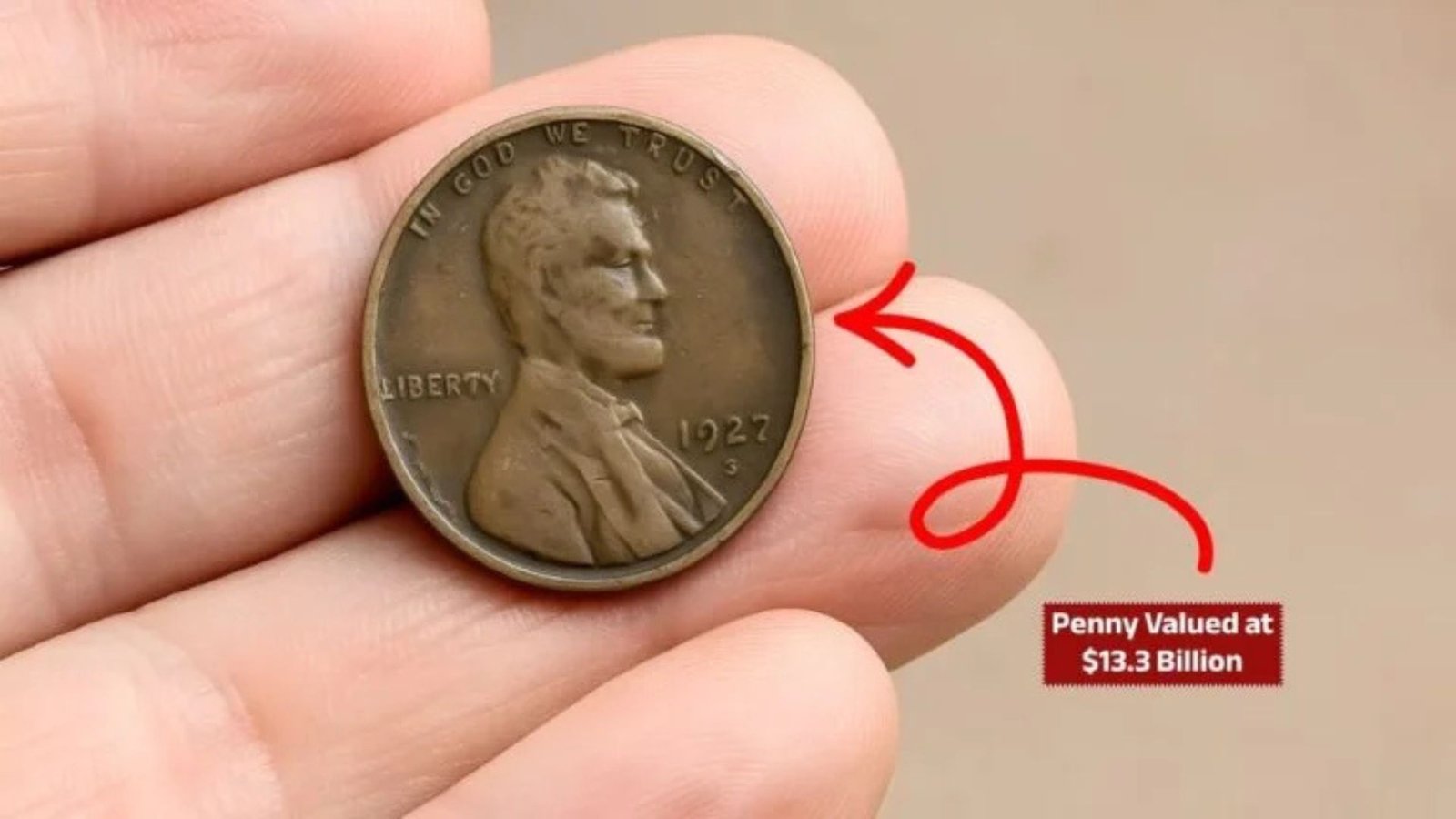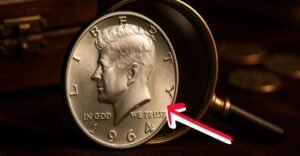The Lincoln Wheat Penny, a small coin with a big story, has captured the hearts of collectors and everyday people alike. This iconic penny, with its wheat stalk design, has been around for over a century. Some rare versions of this coin are valued at an astonishing $13.3 billion, and the best part? They might still be hiding in circulation, waiting to be found in your pocket change! we’ll dive into the fascinating history of the Lincoln Wheat Penny, explore why certain ones are so valuable, and share tips on how to spot a potential treasure.
What Is the Lincoln Wheat Penny?
The Lincoln Wheat Penny is a U.S. one-cent coin first minted in 1909 to celebrate the 100th anniversary of President Abraham Lincoln’s birth. Designed by Victor David Brenner, it was the first U.S. coin to feature a president’s portrait. The penny’s reverse side shows two wheat stalks, giving it the nickname “Wheat Penny.” It was produced from 1909 to 1958, and millions were circulated, making it a familiar sight in American pockets.
Why Is It So Special?
While most Lincoln Wheat Pennies are worth just a few cents, certain rare varieties have skyrocketed in value due to minting errors, low production numbers, or unique historical significance. Some of these coins are so rare that they’ve fetched millions at auctions, with one potentially valued at $13.3 billion! Let’s explore what makes these pennies so extraordinary.
The History of the Lincoln Wheat Penny
The Lincoln Wheat Penny holds a special place in American history. Here’s a quick look at its journey:
1909: The Birth of the Penny
In 1909, the U.S. Mint released the Lincoln Wheat Penny to honor Abraham Lincoln. The coin’s design featured Lincoln’s profile on the front and wheat stalks on the back, symbolizing America’s agricultural heritage. The first coins, especially those with the designer’s initials “V.D.B.,” became instant collector’s items.
Key Dates and Minting Errors
Over the years, certain Lincoln Wheat Pennies became famous due to rare minting errors or limited production. For example, the 1943 copper penny, accidentally struck in copper instead of zinc-coated steel, is one of the rarest coins in the world. Only a handful exist, making them incredibly valuable.
Why Some Pennies Are Worth Billions
The $13.3 billion valuation of a Lincoln Wheat Penny might sound unbelievable, but it’s tied to the coin’s rarity, condition, and demand among collectors. Coins in pristine condition, with unique errors or from specific years, can command jaw-dropping prices at auctions.
Rare Lincoln Wheat Pennies to Look For
Not every Lincoln Wheat Penny is worth a fortune, but some stand out. Here’s a table of the most valuable ones to watch for:
| Year | Mint Mark | Description | Estimated Value |
|---|---|---|---|
| 1909-S | S | V.D.B. initials | Up to $2 million |
| 1943 | None (Philadelphia) | Copper penny (error) | Up to $1.7 million |
| 1955 | None (Philadelphia) | Double die error | Up to $125,000 |
| 1969-S | S | Double die error | Up to $100,000 |
| 1914-D | D | Low mintage | Up to $250,000 |
What Makes These Pennies Valuable?
- Minting Errors: Mistakes like double-die imprints or wrong metal usage (e.g., 1943 copper penny) make coins rare.
- Low Mintage: Some years, like 1914-D, had fewer coins produced, increasing their scarcity.
- Condition: Coins in excellent condition, graded by services like PCGS or NGC, fetch higher prices.
- Historical Significance: Early coins, like the 1909-S V.D.B., are prized for their place in history.
How to Spot a Valuable Lincoln Wheat Penny
Finding a billion-dollar Lincoln Wheat Penny in your change is like finding a needle in a haystack, but it’s not impossible! Here’s how to check:
Step 1: Look at the Date and Mint Mark
Check the year on the front of the penny. Then, look for a mint mark below the date. Common mint marks are:
- S: San Francisco Mint
- D: Denver Mint
- No mark: Philadelphia Mint
Rare dates like 1909-S, 1914-D, or 1943 are worth inspecting closely.
Step 2: Check for Errors
Examine the coin for errors like double-stamped letters or numbers. The 1955 double-die penny, for example, shows a noticeable doubling of the date and words.
Step 3: Inspect the Metal
Most 1943 pennies are steel due to wartime copper shortages, but a few were mistakenly made in copper. If you find a 1943 penny that’s not magnetic, it could be worth millions!
Step 4: Get It Appraised
If you suspect you have a rare Lincoln Wheat Penny, take it to a professional coin dealer or grading service like PCGS or NGC. They can verify its authenticity and value.
Tips for Collecting Lincoln Wheat Pennies
If you’re excited to start hunting for Lincoln Wheat Pennies, here are some tips to get you started:
- Check Your Change: Look through pocket change, coin rolls, or old jars for Wheat Pennies.
- Visit Coin Shops: Local coin shops often have Wheat Pennies for sale or trade.
- Attend Auctions: Rare pennies often appear at coin auctions, both online and in-person.
- Join Collector Communities: Connect with other collectors through forums or clubs to learn more and trade coins.
- Store Coins Safely: Use coin holders or albums to protect your pennies from damage.
Why Are Collectors Obsessed with the Lincoln Wheat Penny?
The Lincoln Wheat Penny isn’t just a coin—it’s a piece of history. Collectors love it for several reasons:
- Nostalgia: Many people grew up seeing Wheat Pennies in circulation, evoking fond memories.
- Affordability: Most Wheat Pennies are inexpensive, making them accessible for new collectors.
- Thrill of the Hunt: The possibility of finding a rare, valuable penny in everyday change is exciting.
- Historical Value: The penny’s connection to Abraham Lincoln and early 20th-century America adds to its appeal.
Could a Lincoln Wheat Penny Really Be Worth $13.3 Billion?
The $13.3 billion valuation is likely tied to a specific, ultra-rare Lincoln Wheat Penny, such as a one-of-a-kind error coin or a pristine example from a key year. While no penny has sold for this exact amount, the potential exists for a coin with extraordinary rarity and condition. For comparison, a 1943 copper penny sold for $1.7 million in 2010, and prices have only climbed since then.
Factors Driving the Billion-Dollar Value
- Rarity: Only a few coins, like the 1943 copper penny, exist in the world.
- Demand: Wealthy collectors and investors drive up prices at auctions.
- Condition: Coins graded as “Mint State” (near-perfect) are worth far more.
- Market Trends: The value of rare coins tends to rise over time as fewer remain in circulation.
How to Start Your Lincoln Wheat Penny Collection
Ready to hunt for your own billion-dollar penny? Here’s a beginner’s guide:
- Learn the Basics: Study key dates, mint marks, and errors to know what to look for.
- Get a Magnifying Glass: A loupe (10x magnification) helps you spot errors and details.
- Buy a Coin Guide: Books like the “Red Book” (A Guide Book of United States Coins) are great resources.
- Check Online Marketplaces: Sites like eBay or Heritage Auctions often list Wheat Pennies.
- Be Patient: Building a valuable collection takes time, but the journey is rewarding.
Conclusion: Is a Billion-Dollar Lincoln Wheat Penny in Your Future?
The Lincoln Wheat Penny is more than just pocket change—it’s a treasure waiting to be discovered. While most pennies are worth only a cent, a rare few could make you a millionaire (or even a billionaire!). By learning about key dates, minting errors, and how to spot valuable coins, you can turn your loose change into a potential fortune. So, next time you empty your pockets, take a closer look—you might just find a Lincoln Wheat Penny worth $13.3 billion!




